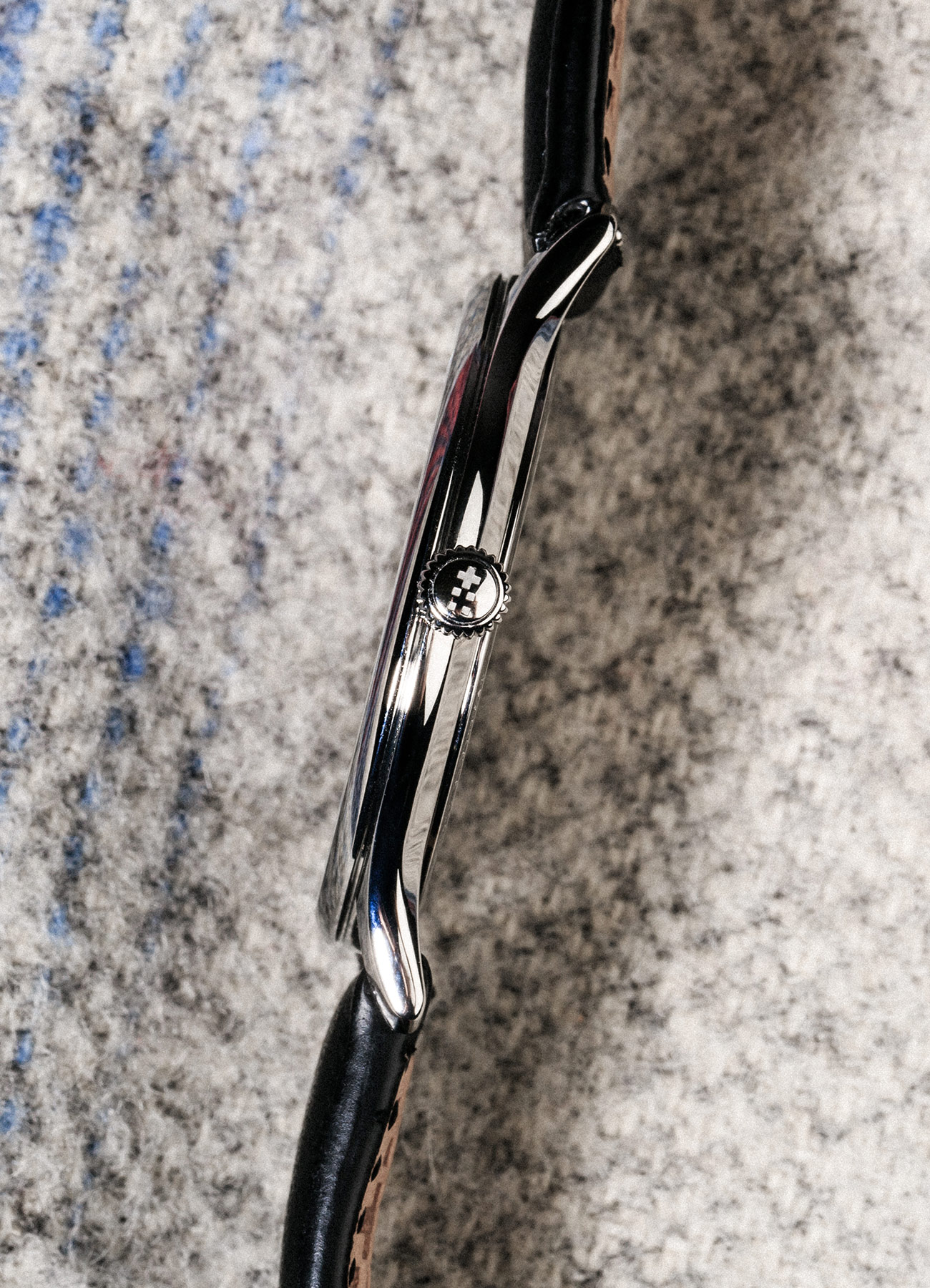Christopher Ward Malvern 595 Review: An Ultra-Thin Watch at an Ultra-Low Price
Christopher Ward is a name that, amongst watch enthusiasts, might garner either disregarding sneers by those apprehensive to boutique brands or respectful nods of approval from those who perceive it as an exceptionally good value. Taste in watches is, ultimately, a very subjective thing, but it’s hard to argue that the brand doesn’t offer a lot of watch for not a ton of money. In fact, the brand was something of a pioneer of the value-driven online watch movement back in 2004 when it became one of the first brands to sell its timepieces directly to consumers on an online platform.
In recent years, the brand’s prices have crept up, but the products have become more ambitious. For example, in 2014, Christopher Ward debuted an in-house developed movement with a five-day power reserve and chronometer certification, which you can pick up for under $2,000. The brand’s latest timepiece — the C5 Malvern 595 — is not as mechanically ambitious, but in many ways, it still is an impressive feat of watchmaking. Coming in at just 5.95mm (hence the name) and rocking a hand-winding movement, it is one of the thinnest (if not the thinnest) mechanical watches you can buy under $1,000. Given that watchmakers have something of a fixation on making super-thin watches at the moment, it makes it certainly worthy of consideration, no matter how you feel about the brand.
The Good: If you have been bitten by the ultra-thin bug but can’t swing the expense that usually comes with one, the Malvern 595 is a sound compromise. The case feels impossibly sleek and sits so flat it might as well disappear into your wrist. The watch also has a minimal and vaguely industrial design that works with the sleek case design; it feels crafted in the same vein as neo-Bauhaus watches from other microbrands like Union Wares which makes the ultra-thin appeal feel a lot less fuddy-duddy than the old-guard Swiss watchmakers make it seem.
Who It’s For: Anyone looking at accessibly-priced mechanical dress watches should consider looking in the 595’s direction, especially if thinness is a prioritized attribute. It’s an astoundingly sleek timepiece with proportions that are only matched by far more expensive watches.
Watch Out For: It can feel trite to complain about modern watches being too large, but this is really the Malvern 595’s biggest issue. At 39mm in diameter it doesn’t sound like it’s particularly big, but this is a dress watch with a very narrow bezel we’re talking about; this makes the dial feel gigantic. Which would be less of a problem if the dial weren’t so austere. Minimalist dials can be deceptively tricky to master, but by keeping them physically small, you avoid leaving in too much negative space. A drop in diameter would certainly make it feel less sterile.
Alternatives: You’d be hard-pressed to find a watch as thin as the Malvern 595 in its price range, but a couple watches come close. The Junghans Meister Handaufzug — which uses the same ETA 7001 base movement — is 7.3mm thick, but at $1,290 it costs nearly twice as much as the Christopher Ward. If you favor an automatic, Hamilton’s newly revised Jazzmaster Thinline comes in at 8.45mm thick, fairly scant for an auto using a stock ETA movement, and at $995 is closer to the Malvern in price.
Review: If you’ve been paying attention to what brands have been releasing at Baselworld and SIHH, you’d know that for the past couple years many high-end brands have been fixated on slinming watches, trying to one-up their competitors by fractions of a millimeter. Look at Bulgari’s Octo Finnisimo Tourbillon Automatic, a 3.95mm automatic tourbillon, or Piaget’s 2mm-thick watch concept. But these are far out of the grasp of the everyday watch buyer.

But Christopher Ward’s Malvern 595 exists well outside this mainstream realm of high-end one-upmanship, quietly debuting online in February of this year. Even casting the matter of price aside, its 5.95mm profile is still astoundingly thin, but significantly more wearable than Piaget’s razor-thin concept or Bulgari’s six-figure tourbillon. Its more straightforward design also has more mass appeal and wearability than a super-thin watch showcasing a dial crammed with gears.
The 595’s modern, minimalist aesthetic suits the svelte case incredibly well. The bezel is slim and simple, with a small bevel on the outer-edge the only flourish. The dial is also free of any unnecessary complications
— there’s no date, no minute markers, no lume. The dial finish itself is interesting: it’s sandblasted, and its look varies depending on the light. Indoors, in low light situations it has a matte, almost paper-like look; in direct sunlight, it shimmers in a way that almost looks like television static. The thin, long hour markers and needle-like hands further fit with the slim motif and minimalist look, and while the dial is just a bit too expansive, the overall design of the Christopher Ward is both handsome and original.
Powering the watch is an ETA/Peseux 7001, a hand-winding movement just over 2mm thick that’s popped up in a number of dress watches (in various guises) since it debuted in the early 1970s. Its an incredibly simple movement, which you can clearly see through the Malvern’s case back, making it a reliable watch and an easy one to service, given its ubiquity, making it a relatively easy watch to own and service in the long-term.
Verdict: Like many of Christopher Ward’s other watches, the Malvern 595 feels like an incredible value for money, especially when you look towards similar watches that run the same movement but can’t match them it regarding price or thickness. But there’s a lot more than its scant proportions to make it stand out; those who’ve grown tired of the vintage-inspired movement in watches will probably appreciate the watch’s modern aesthetic. And while the 39mm diameter might be a sticking point for some, there will be plenty of buyers out there who will appreciate the larger size.
Key Specs
Movement: ETA/Peseux 7001
Winding: Manual
Case diameter: 39mm
Case height: 5.95mm
Water resistance: 30m
Hot takes and in-depth reviews on noteworthy, relevant and interesting products. Read the Story







